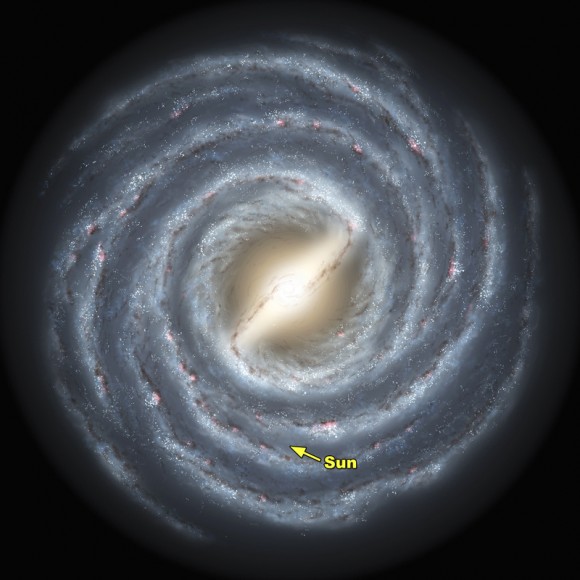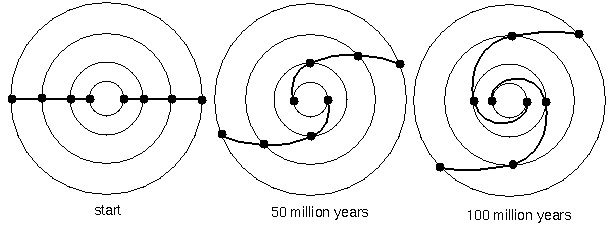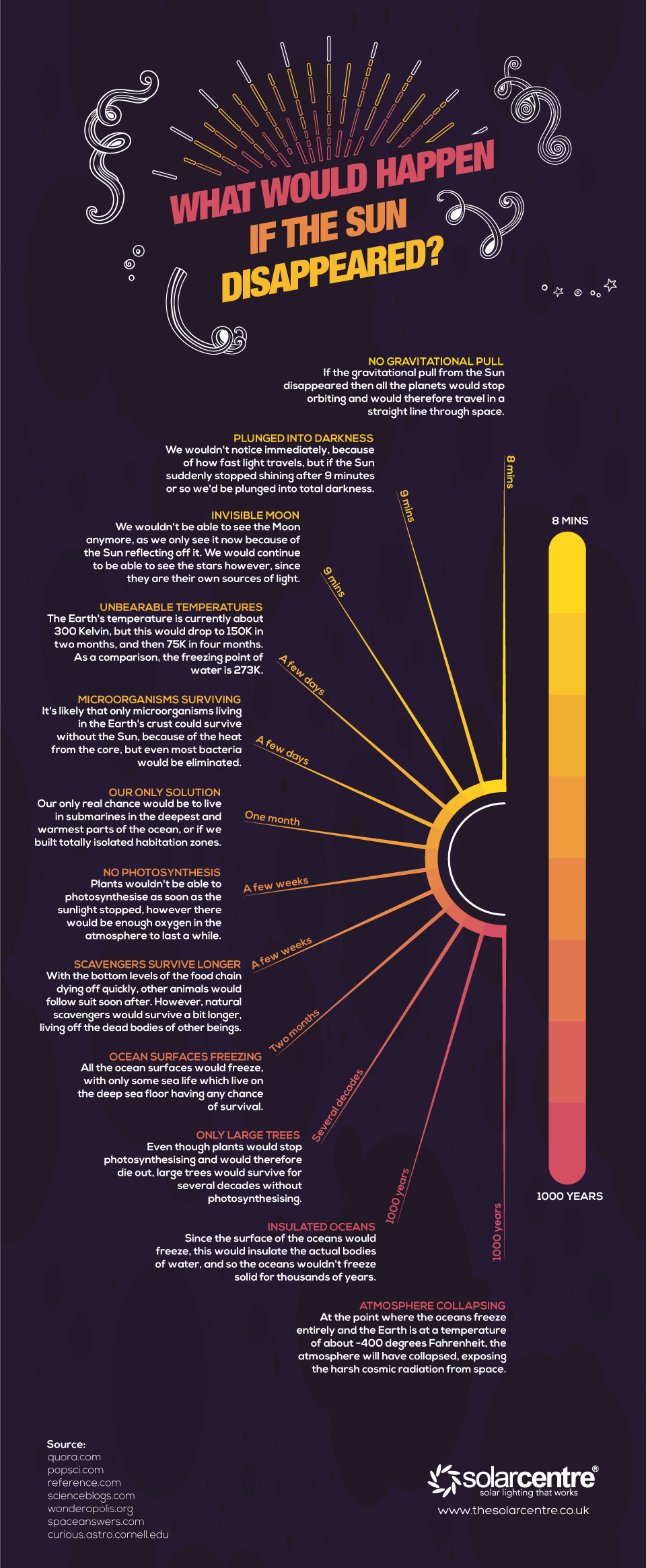What happens if the sun disappears?
EarthSky Voices in Earth | Human World | Space | November 19, 2016
Some things that would happen here on Earth if our giant source of heat and light were to vanish from the sky, and how long it would take.
Image via solarcentre
This infographic from the Solar Centre looks at what would happen if our giant source of heat and light were to suddenly vanish from the sky, along with a timescale of how long it would take for these things to happen.
Bottom line: Infographic showing what would happen if our sun suddenly disappeared.
 |
 |
|
|||||||||||
 |
 |
||||||||||||
|
|
|
|
|
|
|
||||||||
 |
|
|
|
|
|
 |
|||||||
|
|
|
|
|||||||||||
|
|
|||||||||||||
|
|
|
|
|
|
|
|
|
|
|
|
|
|
|
Results 441 to 450 of 679
-
11-26-2016, 01:22 PM #441Beginner's Guide for Rocket, NFPS and IKS66...
http://iptvtalk.net/showthread.php?2...-you-should-do
Kodi Options for Rocket, NFPS and IKS66...
http://iptvtalk.net/forumdisplay.php?71-Kodi
Check the Announcement Section...
http://iptvtalk.net/forumdisplay.php...-Announcements
-
11-29-2016, 02:04 AM #442
Is anyone watching the Show MARS On National Geographic?
-
11-29-2016, 12:46 PM #443
I haven't yet. You? If so, what do you think?
Beginner's Guide for Rocket, NFPS and IKS66...
http://iptvtalk.net/showthread.php?2...-you-should-do
Kodi Options for Rocket, NFPS and IKS66...
http://iptvtalk.net/forumdisplay.php?71-Kodi
Check the Announcement Section...
http://iptvtalk.net/forumdisplay.php...-Announcements
-
11-29-2016, 01:06 PM #444
-
11-29-2016, 04:18 PM #445
Cosmos was great! It was inspiring. Carl is sorely missed as the public face of astronomy.
Beginner's Guide for Rocket, NFPS and IKS66...
http://iptvtalk.net/showthread.php?2...-you-should-do
Kodi Options for Rocket, NFPS and IKS66...
http://iptvtalk.net/forumdisplay.php?71-Kodi
Check the Announcement Section...
http://iptvtalk.net/forumdisplay.php...-Announcements
-
11-29-2016, 04:35 PM #446How long to orbit Milky Way’s center?
EarthSky in Astronomy Essentials | Space | November 28, 2016
One journey of our sun and planets around the center of our Milky Way galaxy is sometimes called a cosmic year. That’s approximately 225-250 million Earth-years.

Our sun is located about two-thirds of the way out from the center of the Milky Way. Illustration via Caltech.
The planets in our solar system orbit around the sun. One orbit of the Earth takes one year. Meanwhile, our entire solar system – our sun with its family of planets, moon, asteroid and comets – orbits the center of the Milky Way galaxy. Our sun and solar system move at about about 500,000 miles an hour (800,000 km/hr) in this huge orbit. So in 90 seconds, for example, we all move some 12,500 miles (20,000 km) in orbit around the galaxy’s center.
Our Milky Way galaxy is a big place. Even at this blazing speed, it takes the sun approximately 225-250 million years to complete one journey around the galaxy’s center.
This amount of time – the time it takes us to orbit the center of the galaxy – is sometimes called a cosmic year.

Artist’s concept of solar system with the Milky Way galaxy in the background.
By the way, in the past when we’ve talked about this subject, people have commented on the difference between the words rotate and revolve. The word revolve means to orbit around another body. Earth revolves (or orbits) around the sun. The sun revolves around the center of the Milky Way galaxy.
On the other hand, rotate means to spin on an axis. The Earth rotates every 24 hours. The sun rotates, but not at a single rate across its surface. The movements of the sunspots indicate that the sun rotates once every 27 days at its equator, but only once in 31 days at its poles.
What about the Milky Way galaxy? Yes, the whole galaxy could be said to rotate, but like our sun, the galaxy is spinning at different rates as you move outward from its center. At our sun’s distance from the center of the Milky Way, it’s rotating once about every 225-250 million years – defined by the length of time the sun takes to orbit the center of the galaxy.

Illustration of a rotating galaxy, with different parts of the galaxy revolving around the center at different rates. Scientists call this “differential rotation.” Stars near the center revolve around the center faster than those farther out. This diagram is from Nick Strobel’s Astronomy Notes. Go to his site at (www dot astronomynotes dot com) for updates and more info.
Bottom line: The planets in our solar system orbit (revolve) around the sun, and the sun orbits (revolves) around the center of the Milky Way galaxy. We take about 225-250 million years to revolve once around the galaxy’s center. This length of time is called a cosmic year.Beginner's Guide for Rocket, NFPS and IKS66...
http://iptvtalk.net/showthread.php?2...-you-should-do
Kodi Options for Rocket, NFPS and IKS66...
http://iptvtalk.net/forumdisplay.php?71-Kodi
Check the Announcement Section...
http://iptvtalk.net/forumdisplay.php...-Announcements
-
12-02-2016, 07:00 PM #447Can we see stars outside our Milky Way?
EarthSky in Tonight | November 28, 2016

Photo by Jeff Dai in Tibet.
One of you wrote:
Are there any stars outside our own galaxy that we can see with just the eye?
The answer is no – unless you count seeing the combined light of many billions of stars. From the Northern Hemisphere, the only galaxy outside our Milky Way that’s easily visible to the eye is the great galaxy in the constellation Andromeda, also known as M31.
From the Southern Hemisphere, it’s possible to see two dwarf galaxies, the Large and Small Magellanic Clouds.
So what are we seeing when we look up? The image at the top of this post shows a hazy band in the sky. This is the edgewise view into our own Milky Way galaxy. Our galaxy is about 100,000 light-years in a diameter, but it’s relatively flat, only about 10,000 light-years thick. So – if we’re looking in a dark sky – when we look toward the galactic disk, we see the starry band of the Milky Way.
And when we look up or down – away from the flat disk of the galaxy – we’re also seeing Milky Way stars. All of the stars we see with the eye alone belong to our Milky Way galaxy.
It is possible to see the Andromeda galaxy with the eye alone, from Earth’s Northern Hemisphere. This galaxy appears as a hazy patch in our night sky, about as wide in diameter as a full moon. And, indeed, this haze represents the light of the Andromeda galaxy’s billions of stars. But we still can’t see individual stars within this galaxy – not with the eye alone. Even with amateur telescopes, the patch of light that we see as the Andromeda galaxy looks, at best, like haze.
Anthony Lynch Photography provided this beauty of photo in August, 2015. It’s a colorful Perseid meteor and the Andromeda galaxy. Thank you Anthony!
A few years ago, astronomers released a new sharpest-ever view of the Andromeda galaxy.
And you can see the galaxy for yourself. At mid-northern latitudes in late November, the Andromeda galaxy is visible from nightfall till about 4 a.m. Here are a couple of ways to find the galaxy:
Use Great Square of Pegasus to find Andromeda galaxy
Or …
Use constellation Cassiopeia to find Andromeda galaxy
Be sure to look for it in a dark sky, far from city lights. Good luck!
Bottom line: On a dark night, there are so many stars. Are any of the stars we see with the eye alone located beyond our home galaxy? The answer is no. All the stars we see with the eye alone belong to our Milky Way. But there is one distant galaxy you can see from Earth.Beginner's Guide for Rocket, NFPS and IKS66...
http://iptvtalk.net/showthread.php?2...-you-should-do
Kodi Options for Rocket, NFPS and IKS66...
http://iptvtalk.net/forumdisplay.php?71-Kodi
Check the Announcement Section...
http://iptvtalk.net/forumdisplay.php...-Announcements
-
12-12-2016, 01:59 PM #448Geminid meteors in moonlight
EarthSky in Tonight | December 11, 2016

On the nights of December 11 and 13, 2016, you might see some meteors as the 2016 Geminid meteor shower picks up steam. The peak comes Tuesday night – the night of December 13 – but these nights might be a good time to watch, too. Just know that the best viewing hours are typically in the wee hours after midnight (around 2 a.m.), no matter where you are on Earth. In the Northern Hemisphere, this meteor shower often rates as one of the best – if not the best – shower of the year on a dark, moonless night. You can often see as many as 50 or more meteors per hour But this year, in 2016, the full moon occurs on the same date as the shower’s peak. The optimal viewing night on December 13-14 will be under the glaring night of a supermoon, which is sure to reduce the count this year.Beginner's Guide for Rocket, NFPS and IKS66...
http://iptvtalk.net/showthread.php?2...-you-should-do
Kodi Options for Rocket, NFPS and IKS66...
http://iptvtalk.net/forumdisplay.php?71-Kodi
Check the Announcement Section...
http://iptvtalk.net/forumdisplay.php...-Announcements
-
12-13-2016, 06:03 PM #449A new light on stellar death
University of California, Santa Barbara
Astronomers illuminate the role rapidly spinning black holes play in tidal disruption events

An artist's depiction of a rapidly spinning supermassive black hole surrounded the rotating leftovers of a star that was ripped apart by the tidal forces of the black hole.
Credit: ESO, ESA/Hubble, M. Kornmesser
Back in 2015 when astronomers discovered an intense flare in a distant galaxy, they considered it the brightest supernova ever observed.
Now, UC Santa Barbara astrophysicists and a group of international colleagues offer an entirely different interpretation based on new astronomical observation data from the Las Cumbres Observatory (LCO), a global robotic telescope network, and the Hubble Space Telescope.
The new information indicates that the event, called ASASSN-15lh, is actually a tidal disruption event (TDE) -- the destruction of a star by a supermassive black hole. The findings appear in the inaugural issue of the journal Nature Astronomy.
"Years ago we just wouldn't have been able to follow an event like this," said co-author Andy Howell, leader of the supernova group at the Goleta, California-based LCO and an adjunct professor in UCSB's Department of Physics. "This study shows that large-area surveys, a global robotic telescope network and a NASA satellite can come together to reveal dramatic new discoveries that wouldn't be possible without each piece of that puzzle."
Using images from the Hubble Space Telescope that were not available when ASASSN-15lh was discovered, the scientists found that the event occurred at the center of the galaxy where the supermassive black hole resides. The black hole inferred to lie in this galaxy is more than 100 million times the mass of the sun.
For a star to be tidally disrupted by such a massive black hole -- rather than swallowed whole -- the black hole must be spinning very rapidly. This discovery marks the first time that a TDE has been used to probe the spin of a black hole, a property that is very difficult to measure and is used to infer the existence of so-called Kerr black holes.
ASASSN-15lh occurred when the star strayed too close to the supermassive black hole and was torn apart by the tides generated by the extreme gravity. The stellar material orbited around the black hole, collided with itself at high velocity and started falling into the black hole. This released copious amounts of energy and generated the bright flare astronomers observed as ASASSN-15lh.
"We've only been studying the optical flares of tidal disruptions for the last few years," said co-author Iair Arcavi, principal investigator of the LCO program that's used to observe ASASSN-15lh and an Einstein postdoctoral fellow at UCSB. "ASASSN-15lh is similar in some ways to the other events we've been seeing but is different in ways we didn't expect. It turns out that these events -- and the black holes that make them -- are more diverse than we had previously imagined."
"This is like discovering a new kind of dinosaur," Howell said. "Now that we have the right tools and know what to look for, we're going to find more and get a better sense of the population. It's exciting to have new ways of learning about black holes and stellar death."Beginner's Guide for Rocket, NFPS and IKS66...
http://iptvtalk.net/showthread.php?2...-you-should-do
Kodi Options for Rocket, NFPS and IKS66...
http://iptvtalk.net/forumdisplay.php?71-Kodi
Check the Announcement Section...
http://iptvtalk.net/forumdisplay.php...-Announcements
-
12-15-2016, 07:59 PM #450Soupy mix of minerals a ‘jackpot’ on Mars
Shannon Stirone, Astronomy Magazine | Wednesday, December 14, 2016

Mount Sharp stands in the distance for Curiosity. This image was captured shortly after the rover landed. It’s come a long way since.
NASA/JPL-Caltech
Today, the Red Planet is a dry, dusty landscape devoid of hospitable environments, but the Mars of yesteryear, evidence suggests, was a far more forgiving place.
Recent findings from the Curiosity rover indicate that the clay and mineral deposits on the higher regions of Mount Sharp were ideal for hosting life. The rover regularly takes samples of the soil as it traverses the mountain and also uses its Chem-Cam laser to analyze the composition of rocks that are of particular interest.
Recently, Curiosity discovered something on the Red Planet that’s never been seen before: boron. This finding is of particular interest to scientists because boron is usually found in abundance of groundwater, and where we find water we tend to find life. NASA’s mission, after all, is to always “follow the water.”Beginner's Guide for Rocket, NFPS and IKS66...
http://iptvtalk.net/showthread.php?2...-you-should-do
Kodi Options for Rocket, NFPS and IKS66...
http://iptvtalk.net/forumdisplay.php?71-Kodi
Check the Announcement Section...
http://iptvtalk.net/forumdisplay.php...-Announcements
Similar Threads
-
RCU model pics
By crazed 9.6 in forum BuzzTV RemotesReplies: 25Last Post: 01-05-2024, 10:41 PM -
BuzzTV e1 - pics
By Ryu in forum BuzzTV EssentialsReplies: 0Last Post: 02-01-2021, 01:06 AM -
Zx Pics
By Capt.Kangaroo in forum Formuler ZxReplies: 17Last Post: 09-21-2018, 02:38 PM -
This is cool pics
By Marley in forum Chit Chat LoungeReplies: 0Last Post: 03-06-2018, 06:41 PM -
Space Pics v.3
By Capt.Kangaroo in forum Deep SpaceReplies: 527Last Post: 05-25-2016, 02:09 PM







 Reply With Quote
Reply With Quote


